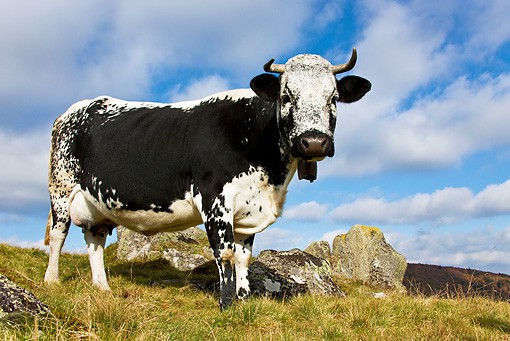Type the name of the breed you're looking for below
[wpdreams_ajaxsearchlite] Don't see the breed your're looking for? Click here and let us know!
Vosges cattle
| Place of Origin | Germany and Switzerland |
| Origin | This breed is a native of the Vosges Mountains, principally in Alsace. Vosges cattle are exceptionally healthy, fertile and long-lived, milk production at the age of fifteen is not unusual. The Vosges was originally a working breed that was transformed into a dairy type. The origin of the breed traces back to the 17th century, when Swedish soldiers brought Scandinavian cattle into the region after the Thirty Years War. The breed was at the height at the beginning of the 20th century (1914: 125,000 cows), but was strongly affected by World Wars I and II and then the pressure of other breeds. (1976: less than 3 000 cows). In 1971, semen from Telemark bulls in Norway was used to a limited extent and nowadays the proportion of Telemark blood is about 1/8. In 1977, a safeguard scheme was undertaken and the breed is now increasing, with about 8,500 cows (1997). |
| Purpose | Meat and dairy. |
| Appearance | The Vosges is a black and white, colour sided breed. The head is mainly milky grey. Dark rings around the eyes. The muzzle and the area around it are also dark. Withers height: Bull: 135 - 140 cm Cow: 125 - 135 cm |
| Horns | Small forward facing horns |
| Cows Average Weight | 600 kg (1,323 lbs.) |
| Bulls Average Weight | 800 kg (1,764 lbs.) |
| Other Considerations | Vosges is a good natured, robust, undemanding milk-base dual purpose mountain cattle, well-adapted to difficult regions and to variation in temperature, able to walk long distances and to make good use of roughage. Fed almost exclusively on home grown fodder and kept in the summer on high land in the Vosges Mountains, the breed is well -known for the quality of its milk from which the distinct German Munster cheese is made. Another of its qualities is its ease of calving. Milk production: 3 479 Kg at 3,75 % butter fat and 3,33 % protein. |



